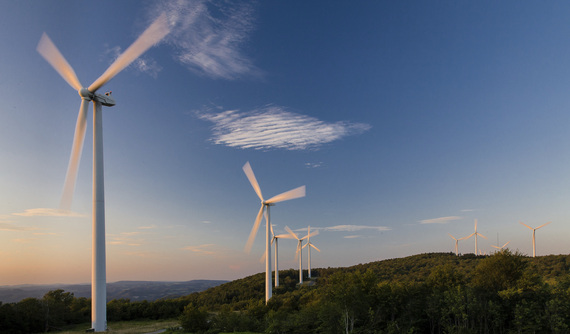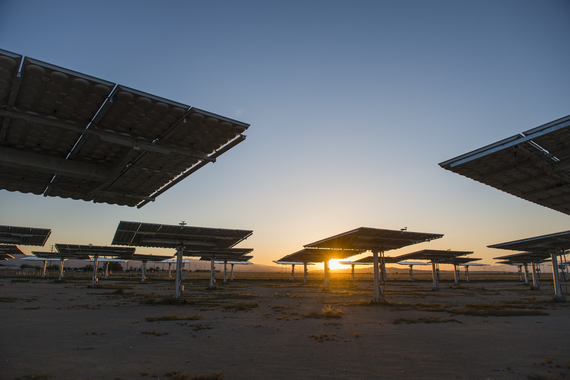By Mark Tercek and Jimmie Powell
Mark Tercek is President and CEO of the Nature Conservancy and author of Nature's Fortune. Follow Mark on Twitter: @MarkTercek. Jimmie Powell is the Nature Conservancy's Energy Team Lead.
The Supreme Court's decision last week to stay President Barack Obama's Clean Power Plan may delay implementation of that particular program.
But it won't halt the revolution underway in the electric power sector.
Under the stay, the government must suspend its enforcement of the program until the D.C. Circuit Court rules on the plan's legal merits in June.
Although we need federal policies like this to accelerate our country's transition away from dirty fuels, the U.S. is already well on its way to moving toward an economy that provides cleaner and more reliable energy options, as well as more personal control over our utility bills.
Multiple forces unrelated to federal policy are driving this electric power revolution.
1. Natural gas prices dropped dramatically as developers learned how to tap the huge reserves of natural gas in shale formations. Many gas-fired power plants in the U.S. were idled in the early 2000s when natural gas prices rose. But now that gas is much cheaper, utilities are firing up those power plants once again, generating abundant, low-cost energy that is much cleaner than the coal it is replacing.
 Equipment for utilizing natural gas - which is cheaper and cleaner than coal - can be seen in Wyoming. © David Stubbs
Equipment for utilizing natural gas - which is cheaper and cleaner than coal - can be seen in Wyoming. © David Stubbs
2. Since the early 2000s, states have moved toward requiring power generation from solar, wind and other renewable energy resources. Notably, two red states--Kansas and South Dakota--are now getting more than 20% of their annual power generation from wind turbines.
States adopted these renewable electricity standards because they wanted power generated at home where it would create jobs and provide income for landowners willing to host wind farms. They were right to see the green economy as a huge source of new employment--today, more Americans work in the solar industry than in coal mining.
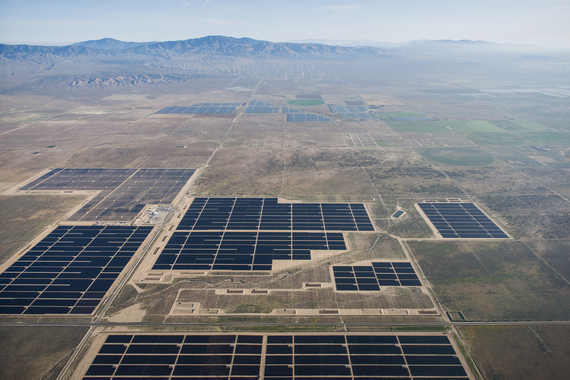 States are increasingly moving toward requiring power generation from renewable energy, such as solar panels. © Dave Lauridsen
States are increasingly moving toward requiring power generation from renewable energy, such as solar panels. © Dave Lauridsen
3. The cost of renewable energy is declining rapidly. New wind power is now cheaper than energy from new coal-fired power plants and is competitive with natural gas power. Rooftop solar power is the fastest-growing source of new power generation and is now competitive with average grid prices in 19 states.
4. Many states have adopted their own energy efficiency programs. Twenty-two states require their utilities to offer programs to customers that will actually reduce the total demand for electricity each year. These programs have been tremendously successful at saving energy for less than half the cost of building new natural gas generation capacity.
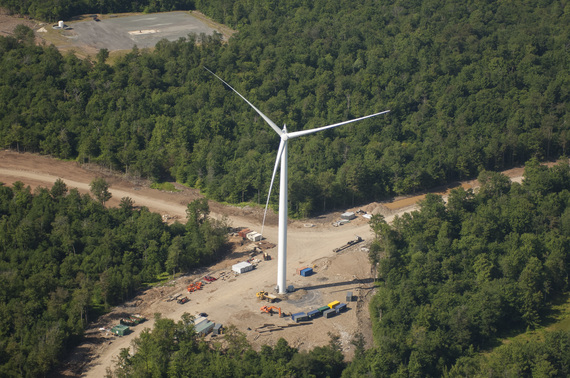 This juxtaposition of wind farm and gas well construction highlights the changing complexion of the electric power sector. © Mark Godfrey
This juxtaposition of wind farm and gas well construction highlights the changing complexion of the electric power sector. © Mark Godfrey
5. After decades of 1% to 2% annual growth in electric power demand, that number has essentially been flat since the Great Recession. Old plants are being retired and increasingly replaced by clean, renewable sources of energy.
6. As we become a more digital economy, the value of reliable electricity supply has increased dramatically. When all of our work relies on computers, we can't afford an outage. Some of the country's biggest companies, such as Walmart and Google, are getting into the power generation business. And they're choosing wind and distributed solar generation, as well as looking at battery storage, to ensure they have clean power supplies around the clock.
7. The smart grid is beginning to gain steam. Reforms in power companies' rate structures allow consumers to reduce their bills by shifting their demand to low-cost periods of the day. And companies can use a new two-way information system on the distribution grid so they can deftly manage all of the new opportunities to generate and store clean energy.
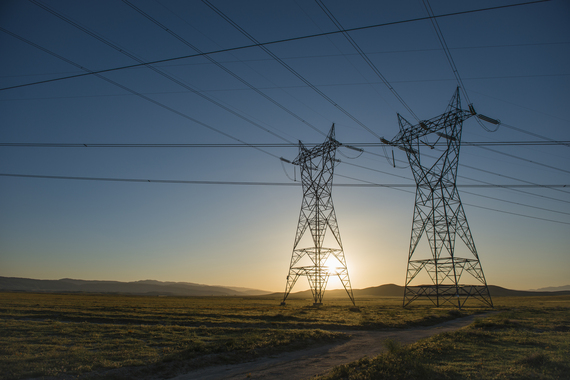 The smart grid allows consumers to shift their power demand to low-cost periods of the day. © Dave Lauridsen
The smart grid allows consumers to shift their power demand to low-cost periods of the day. © Dave Lauridsen
At the Nature Conservancy, we're doing our part, too. We're working with governments in all 50 states to lower emissions in ways that best fit each individual state.
To meet the commitment the U.S. made at the Paris climate talks in December -- to reduce emissions to 26% to 28% below 2005 levels by 2025 -- we need federal policy that strengthens the Clean Power Plan and puts a price on carbon, either through a carbon tax or a cap-and-trade program.
These kinds of policies would accelerate our country's transition to a low-carbon economy by bumping laggard states up to the level of those making rapid progress.
Until that happens, independent forces of change continue to fuel a revolution in the electric power sector. Although the delay in the Clean Power Plan creates a minor setback for that particular program, state governments, utilities, developers and citizens are making progress by taking advantage of other opportunities to generate more clean power, encourage more efficient energy use and create more choices for consumers.
The Supreme Court can't stop this kind of energy revolution.

